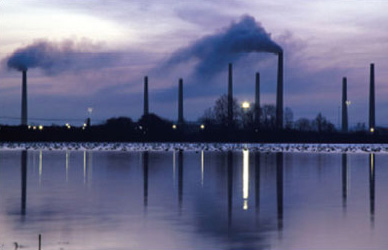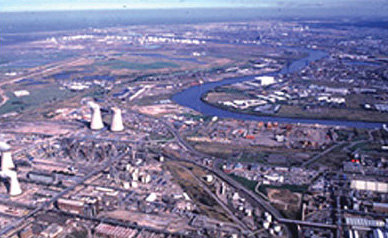3.2.1 The atmosphere
Pollution of the atmosphere has increased rates of nitrogen deposition considerably. Nitrogen has long been recognized as the most commonly limiting nutrient for terrestrial plant production throughout the world, but air pollution has now created a modern, chemical, climate that often results in excess supplies of nitrogen due to atmospheric deposition.
The main anthropogenic source of this enhanced nitrogen deposition is the NOx (mainly as NO) released during the combustion of fossil fuels — principally in vehicles and power plants. Like that generated within the atmosphere, this fixed nitrogen returns to the ground as nitrate dissolved in rainwater.
Patterns and rates of deposition vary regionally, and between urban and rural areas. Concentrations and fluxes of nitrogen oxides tend to decline with distance from cities: deposition of inorganic nitrogen has been found to be twice as high in urban recording sites in New York City than in suburban or rural sites. Some natural ecosystems, particularly those near industrialized areas, now receive atmospheric nitrogen inputs that are an order of magnitude greater than those for pre-industrial times. Figure 3.2 shows intensive industrial land use adjacent to the River Tees and its estuary in Teesside, UK. The estuary is still important for wildlife, including seals and a variety of birds, but its quality has declined markedly due to atmospheric and water pollution. In the UK, atmospheric deposition can add up to 150 kg N ha−1 yr−1. For comparison, the amount thought to trigger changes in the composition of species-rich grassland is 20-30 kg Nha−1 yr−1, and a typical dose farmers apply as inorganic fertiliser to an intensively managed grassland is 100 kg N ha−1 yr−1.


